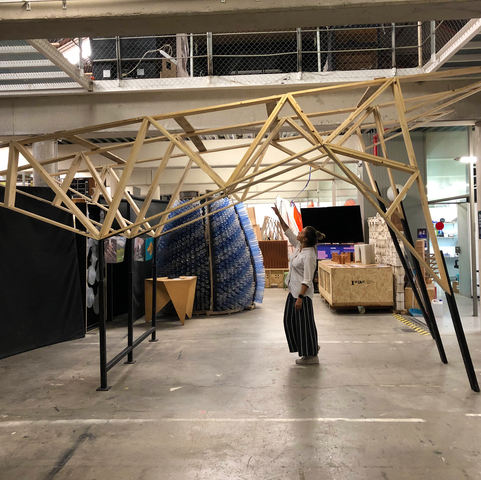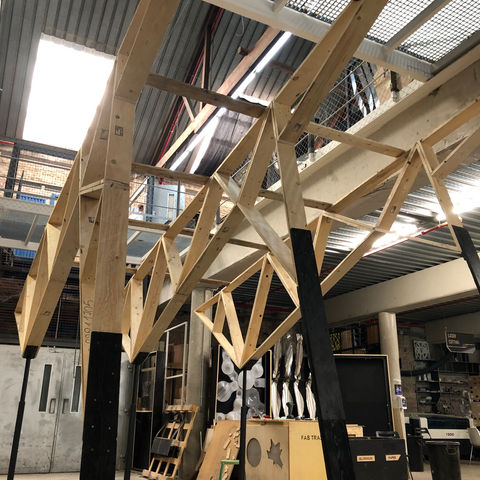
Decoded Disorder
University: Institute for Advanced Architecture of Catalonia
Masters in Robotics and Advanced Construction
Class: Final Studio
In this project, we aim to explore the possibilities of a scalable waste material to design workflow and how irregularities in waste material could be intelligently used as an advantage in the design process by using adaptive algorithmic workflows. We propose a system for planar wood reuse where each recovered wooden plank is scanned using an RGB camera and rated based on its visual defects and then graded by a pre-trained neural network. We then wrote an automated script for DfMA (Design for Manufacturing and Assembly), which algorithmically sorts each piece of wood for waste reduction, generates cutting angles, and creates a custom toolpath for a Kuka ir150 to cut a defined miter joint into each plank of wood with a circular saw and place it into optimized triangular units. We then use AR assisted assembly methods to create our final design.
Algorithmic Workflow
Computer Vision & Machine Learning
We propose a scanning setup using a simple RGB image taken with a camera and use computer vision algorithms to detect features and irregularities on the wood surface. These features are identified, counted and indexed and are fed into a simple neural network which is trained to identify each plank as Grade A, B or C determining it’s quality. In parallel from that image, we extract the plank dimensions and create a database of our wood which will then be used to guide our design.

From a simple picture we can then identify:
Dimensions
Usable Length
Surface irregularities

Using the Owl plugin in Grasshopper, we train a neural network with 1 hidden layer and 20 neurons on a dataset of 200 images in order to predict wood quality of future datasets.

Algorithmic Design & Robotic Fabrication
Given our robotic setup consisting of a Kuka irb-150 and a circular saw, we extract our fabrication constraints (plank lengths and cutting angles) and use them as our goal constraints using the Octopus plugin in Grasshopper.
Robotic Setup
Multi-Objective Evolutionary Optimization


Evolutionary Solver
Design Space
Optimized Design



Material Sorting & Robotic Fabrication
From our scanned database, we are able to label and efficiently fit each piece of wood into our design in order to minimize waste.


We then generate each cut and develop a custom toolpath to pick each plank of wood, cut it at a precise angle and place it into a unique triangular unit to be assembled.
Assembly
Using the Fologram plugin in Grasshopper, we generate an MR assisted workflow in order to assemble each labled triangular unit into our self-stading trusses.









